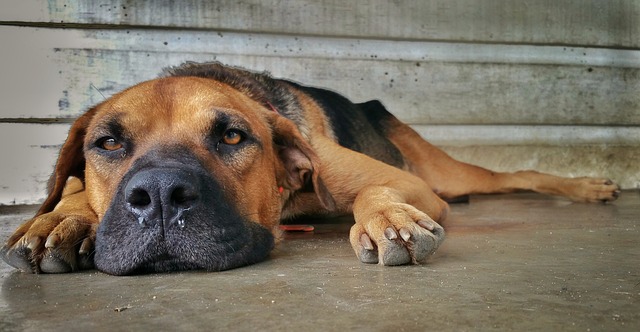
You may notice your dog’s nose running – and whatever is coming out of it could be watery, thin and clear, or may be thicker and contain blood or pus. Whatever it is, it’s a discharge from your dog’s upper respiratory organs, and although runny noses and sneezing are normal for dogs, you should be concerned if it becomes severe or happens frequently, as it could be a sign of a serious health issue.
A mild runny nose will be small amounts of watery stuff, with or without sneezing, and could just be a sign of nervousness in your dog. A severe runny nose that persists and has a thick discharge any color but “clear” should be checked out.
Symptoms of Runny Nose in Dogs
A runny nose itself is often a symptom of other issues, but if it’s accompanied by any of the following, don’t just shrug your shoulders at it.
- Swollen or puffy eyes
- Reduction in nasal respiration
- Trouble breathing
- Secretions on the fur of the dog’s face and/or arms
- Deterioration in dental health
- Bad breath
Types
- Mild, or common runny nose, which is not a concern.
- Severe or chronic runny nose
Causes of Runny Nose in Dogs
A mild runny nose might just be a sign of anxiety, but a severe runny nose can be caused by any of the issues below:
- Allergies, an immune system reaction to your dog’s environment.
- Foreign object in your dog’s nasal passages.
- Bacterial or fungal infection of your dog’s sinuses.
- Nasal mites, a parasitic infection of your dog’s sinuses.
- Dental diseases, such as abscessed teeth, periodontitis and gingivitis, are bacterial infections that can spread into your dog’s nasal passages.
- Nasal cancer, or nasal adenocarcinoma.
Diagnosis of Runny Nose in Dogs
Schedule an appointment with your vet within 24 hours so that they can properly diagnose your pet. They may use general anesthetic to examine his nasal passages with an endoscope, a little camera on the end of a tube. It’s totally safe, but the anesthetic is recommended to prevent your dog from feeling discomfort or sneezing out the tube. The camera will allow your vet to spot anything strange in your dog’s nose. It can also be used to remove foreign objects or take a sample of any suspicious growth they might see.
If dental health is determined to be the cause, a dental exam may be done. They may take a sample of your dog’s nasal discharge to check for fungi and bacteria.
Treatment of Runny Nose in Dogs
How your dog is treated for runny nose will depend on the cause.
- Allergies can be treated by antihistamines, or removal of the cause, if possible.
- If a foreign object is found, your vet will remove it and may prescribe an anti-inflammatory to prevent infection.
- A bacterial infection will be treated with antibiotics; the veterinarian may let a fungal infection try to clear on its own or may prescribe antifungals, depending on the severity.
- Nasal mites are treated with an oral dose of the heartworm drug ivermectin.
- Dental diseases will be treated directly, through tooth cleaning and the possible removal of teeth under anesthesia.
- Nasal cancer will be the most serious cause of runny nose, and is slow growing but invasive. It doesn’t respond well to chemotherapy, but surgery can remove tumors and radiation therapy can be used if it’s caught early.
Recovery of Runny Nose in Dogs
Follow through on all your veterinarian’s instructions, particularly in regards to medications, and follow up by monitoring your dog’s recovery. If discharge or sneezing continues, frequently clean your dog’s nasal passages by wiping with a soft cloth or tissue. Make sure your dog’s environment is clean, water is always available, and monitor and address your dog’s dental health regularly.

